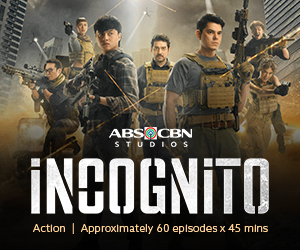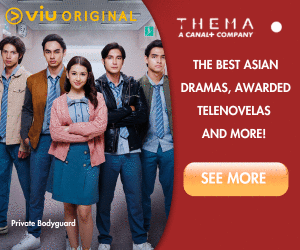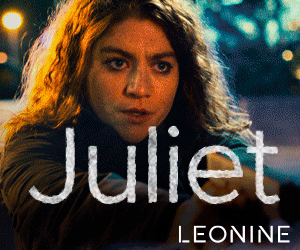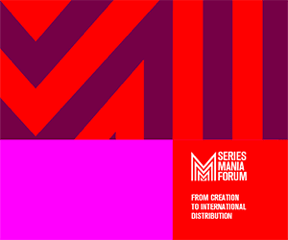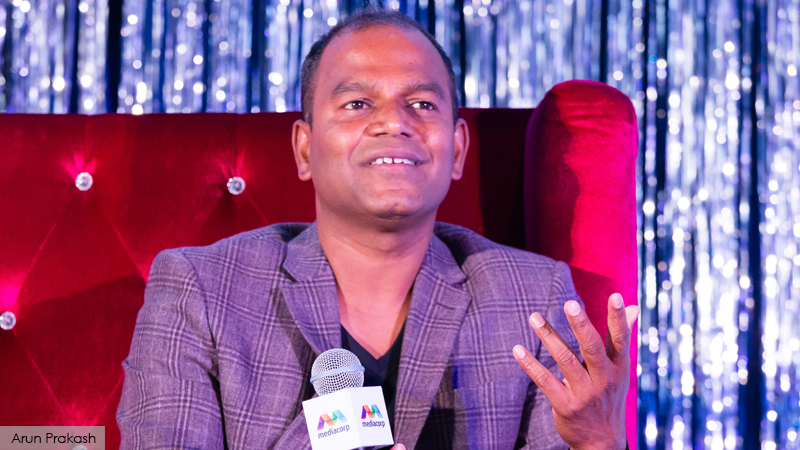
With Asian versions of The Bridge and Hollywood Squares, Viu/Vuclip cemented its place in the rare category of Asian streaming platforms ballsy enough to put real budgets behind original content creation. Vuclip’s president/COO, Arun Prakash, talks about taking the lead in local content spend, the realities of the local production ecosystem, andpartnerships that set shows free.
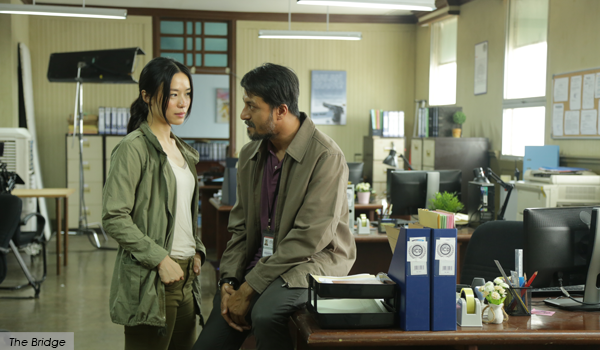
What problem are you trying to solve with originals, such as the local version of Hollywood Squares in India and scripted drama The Bridge? “Viu’s philosophy is to bring premium entertainment to everyone. We don’t believe premium entertainment is only for the elite few. We are focused on Southeast Asia and the Indian subcontinent as well as in Middle East and Africa.
“When we look at bringing premium content to everyone, there are three elements that come together to make that a possibility. First and foremost is availability of premium local content. The second one is accessibility of that content in a very fresh way, not a year later. We know consumers don’t understand content windows and doors. They want fresh content. And so access to fresh local content is extremely important. And the third element is the affordability and, especially in Asia, providing value to the consumer. We look at addressing all three through a freemium business model.
“Viu focuses on the youthful segment of the population. What we are finding is there is not much local premium content being made and we see that as a big gap. As a platform, it’s easier for us to spend money and license content because we can get it onto the platform and to the consumer quickly. But we see the gap in premium content. Local content, largely, is made for free to air or for movies, but premium content is lacking. It’s a great opportunity for Viu.”
What was it about The Bridge that convinced you? “We navigate the decision-making process through two eyes – consumer insights and intuition. Our strategic initiatives include the globalisation of local content and the localisation of global content. Both are important to us. The Bridge presents a great opportunity to do that, with Double Vision, Media Prima and HBO Asia.”
In addition to Viu streaming The Bridge in all its markets, Media Prima will air the series on free-TV channel, ntv7, in Malaysia and HBO Asia will air it on premium/subscription services across the region. What do you see as the advantages of this mixed streaming/free/pay-TV arrangement? “We believe that content is created to be consumed and if the content is created to be consumed there’s no point being protectionist. We believe strongly in getting the content out to be consumed across all the platforms, whether it’s free to air, whether it’s pay TV, whether it’s on the digital platform on Viu. So that’s one strong belief.
The second belief is th...
With Asian versions of The Bridge and Hollywood Squares, Viu/Vuclip cemented its place in the rare category of Asian streaming platforms ballsy enough to put real budgets behind original content creation. Vuclip’s president/COO, Arun Prakash, talks about taking the lead in local content spend, the realities of the local production ecosystem, andpartnerships that set shows free.

What problem are you trying to solve with originals, such as the local version of Hollywood Squares in India and scripted drama The Bridge? “Viu’s philosophy is to bring premium entertainment to everyone. We don’t believe premium entertainment is only for the elite few. We are focused on Southeast Asia and the Indian subcontinent as well as in Middle East and Africa.
“When we look at bringing premium content to everyone, there are three elements that come together to make that a possibility. First and foremost is availability of premium local content. The second one is accessibility of that content in a very fresh way, not a year later. We know consumers don’t understand content windows and doors. They want fresh content. And so access to fresh local content is extremely important. And the third element is the affordability and, especially in Asia, providing value to the consumer. We look at addressing all three through a freemium business model.
“Viu focuses on the youthful segment of the population. What we are finding is there is not much local premium content being made and we see that as a big gap. As a platform, it’s easier for us to spend money and license content because we can get it onto the platform and to the consumer quickly. But we see the gap in premium content. Local content, largely, is made for free to air or for movies, but premium content is lacking. It’s a great opportunity for Viu.”
What was it about The Bridge that convinced you? “We navigate the decision-making process through two eyes – consumer insights and intuition. Our strategic initiatives include the globalisation of local content and the localisation of global content. Both are important to us. The Bridge presents a great opportunity to do that, with Double Vision, Media Prima and HBO Asia.”
In addition to Viu streaming The Bridge in all its markets, Media Prima will air the series on free-TV channel, ntv7, in Malaysia and HBO Asia will air it on premium/subscription services across the region. What do you see as the advantages of this mixed streaming/free/pay-TV arrangement? “We believe that content is created to be consumed and if the content is created to be consumed there’s no point being protectionist. We believe strongly in getting the content out to be consumed across all the platforms, whether it’s free to air, whether it’s pay TV, whether it’s on the digital platform on Viu. So that’s one strong belief.
The second belief is the economics of making high production value, premium local content. The SVOD approach in Southeast Asia cannot be relied on to recover the investment. The economics are not there. A great way for us as a platform is to partner with free to air and pay TV. We all have an equal share in terms of ensuring premium content is made. At the same time, there’s economic recovery for everyone involved.”
What are the pain points in reaching the kind of agreement you have with Media Prima and HBO Asia for The Bridge? “Global studios are very keen to bring their formats and their content to Asia. So there is a keen willingness to work with a platform like Viu and we appreciate that. Second, the approach needs to be win-win. We understand what Media Prima is trying to accomplish. Ntv7 is going after a youthful segment and is looking for fresh premium content. And we understand what HBO Asia is trying to do, which is to get to premium local content. As long as there is a deeper understanding of what each partner is trying to accomplish, and there is complete transparency in the conversation. I think everything else can be worked on.”
What kind of production ecosystem do you think is most conducive to creating the kind of originals pipeline that you would like? “We started the originals strategy about two years ago. In 2018 Viu will air 70 originals across eight different languages in all the markets that we’re in.
“When we look at making originals, there are a few things that stand out. First and foremost, there’s the approach. You can either take a mercenary approach or a missionary approach.
The mercenary approach is looking at the top production companies, the top scriptwriters and directors and saying, ‘okay, I’m going to invest I’m going to make a few pieces of content with you’.
The missionary approach is developing the market and the ecosystem. Viu has taken a very missionary approach in developing the content ecosystem in every market. That means identifying and working with talent from the long tail of talent. That’s a very tough thing to do that requires deep commitment of time in addition to the resources that you pump in.”
“The second is when it comes to selecting content, how do we decide? We have deep consumer insights, but we also go with our intuition, so a lot of times it’s a leap of faith. The Bridge was a leap of faith. We are happy to take those leaps of faith as well. The third element is: Who do you work with as a creator? For us, it’s extremely important that the creator, in addition to talent, has passion.”
What mistakes have you made? “We are very entrepreneurial, so we have an appreciation for mistakes, but those mistakes are tactical mistakes. We don’t believe in making a lot of strategic mistakes. When you make a strategic mistake you can either be brought down onto your knees or you’re burning a lot of your investors’ cash to pivot. They key word is pivot, which burns an enormous amount of investors’ cash. We try not to make strategic mistakes by being very clear about our hypotheses or understanding of the markets and the consumer, and how we approach things. But we have made a number of tactical mistakes. And I have a lot of scars on my back from those mistakes as well.
“The first mistake was when we started doing originals. We didn’t realise that, when you’re working with so-called experts in the market, there are some un-learnings to be made. There is almost a just-in-time approach to making television content in Southeast Asia. You write a few pieces of script in the morning, you shoot in the afternoon, edit room in the evening and it’s taking life in the night. That just doesn’t work for premium content, where there’s a lot of emphasis on the creative development. We didn’t initially anticipate how much unlearning would be required by the industry.
“The second is, when you work with the long tail of creators, there’s a lot of learning to be had. We have to invest in the creative development process, in the script development process. In Indonesia, we conduct an annual event where we hold one week of just script writing and learning. This is completely Viu invested and it has no expectation of return whatsoever. So the second learning for us was to actually invest in learning for the ecosystem.
“The third mistake came from different market maturity levels and the expectation of a certain level of structured, disciplined execution.”
What kind of traction are you getting on your India originals? “India in itself is a big market but it’s a hugely challenging market. There is also an Indian Diaspora, which is a high ARPU market. Our content is syndicated to markets where Viu does not have a presence, including the U.S.”
What about profitability and return on investment? “The OTT game is not for the weak hearted, and definitely not for those who don’t have deep pockets. It’s a long-term game and one that requires a certain level of commitment and discipline. It’s a five- to seven- year journey and it’s not something that we were not aware of going in.”
Are you planning to have Hollywood titles in your AVOD layer or just on SVOD? “We don’t look at every market in the same way. For example, Hong Kong, Singapore and Malaysia are more SVOD markets; consumers’ propensity to pay for content is already there. In a market like Indonesia, pay TV has not done well and the consumer’s propensity to pay for content is not as high, so they have indexed more towards AVOD. Market by market, we turn the dial of AVOD vs SVOD.
Would we like the Hollywood studios not to have their windows and doors? Of course. We don’t like the windows and the doors. Would we like to not have the restrictions of AVOD and SVOD and multiple screens? You know these restrictions don’t exist for the pirate sites. It’s a shame that when you pay for content and you license from all these studios you have to deal with hundreds of restrictions and you know that the next day it will be available on pirated sites. That’s what we are competing with. Would I like all Hollywood content to also be available on AVOD? Absolutely I would love that. Is that going to happen any time soon? I don’t believe so.”
Published in ContentAsia's Issue Five 2018, 4 October 2018













